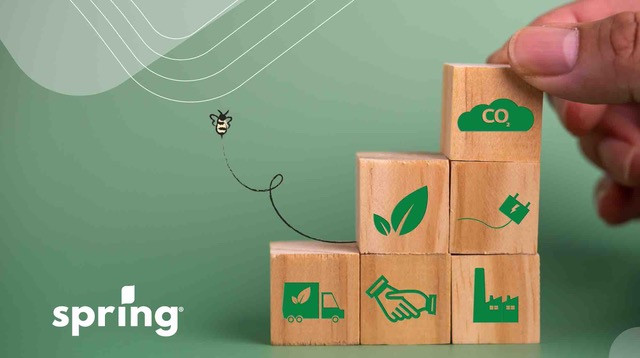The government has recognized this and is offering incentives and benefits to help Canadians battle inflation. While the federal government used to supply a Climate Action Incentive Credit to Canadians on their yearly personal income tax returns, they had then amended it to the Canada Carbon Rebate before it was cancelled in April of 2025.
About the CAIP
This program provided a refundable tax credit to residents of certain provinces in Canada. It was part of a new proposed affordability measure. The Canada Revenue Agency (CRA) provided these payments to those who are affected by the federal fuel charge, also known as the provincial carbon tax.
This is why only certain provinces received the credit. In these provinces the federal pollution pricing system applied. The government understood that the cost of living is expensive and these quarterly payments often covered more than what the resident had paid. This was especially true for low to middle income families.
The reason that only some provinces had a pollution pricing system, is that provinces could choose to either create their own pollution pricing system or they could choose to use the federal system. The provinces that used the federal system were eligible for this credit. The other provinces either had their own provincial carbon tax or they were in the process of creating a pollution pricing system that met the standards required by the federal government.
How it Worked
The idea behind these pricing systems was to fight climate change by reducing carbon pollution. The tax was there to make prices higher deterring Canadians from spending so much on fuel. Instead of charging residents a bill, the amounts are added to heating bills as well as fuel surcharges. The intention of the CAIP and the CCR was to combat some of these costs for Canadians to give them some money in their pockets.
Who Was Eligible?
The provinces that received the CAIP, also referred to as the Canada Carbon Rebate, were Alberta, Ontario, Manitoba, Nova Scotia, New Brunswick, Prince Edward Island, Newfoundland and Labrador, and Saskatchewan.
In order to be eligible for the payment in these provinces, you must have lived in the province the first day of the month that the payments will be received, as well as the last day of the previous month. You must also meet one of the following conditions:
- Be 19 years old
- Have (or had) a spouse or common law partner
- You are (or were) a parent and live (or lived) with your child
In order to have had an eligible child, they must have met the following conditions:
- They were under the age of 19
- They lived with you
- You were primarily responsible for their care
- The child wass registered for the Canada Child Benefit (one of the Child and Family Benefits)

CCR in 2025 vs Previous Years
If you are someone who received Canada Carbon Rebate, then you have probably noticed that the process had changed. In previous years the CCR was a tax credit and was referred to as the Climate Action Incentive Credit (CAIC). This amount was calculated when you filed your taxes and the credit was added to your annual tax return payments.
As of July 2022, the incentive was known as the Canada Carbon Rebate, and it was received as a quarterly benefit. You do not need to apply for it but your eligibility was to be determined after you have filed your tax return. If you were eligible then you would have receives the payments. That being said, if you had a spouse or common-law partner, only one person would get the payment. This would be decided by whoever’s tax return is assessed first. No matter which person received it, the amount would be the same.
While you did not need to apply, you did need to complete your tax return every year to keep receiving payments. If you lived in small or rural communities and qualify for the rural supplement, you did need to apply for it. There was a form you would need to fill out and attach to your tax return. This would be evaluated and you would start receiving that benefit as well if you were eligible. Just like the original CAIP, if you were common law or had a spouse only one would receive the credit. It would come at the same time as the CAIP. The last payment for this program should have been received April 22, 2025.
How Much You Received with the CCR
When it came to how much you got with the CCR, it ultimately depended on the province that you live in. The amounts you received were also based on the tax year before you received the payments. In the case of 2024 payments, they were based on your 2023 tax return.
Your final payment would have been based on your 2024 tax return. That being said, the benefit was universal and would not be reduced based on your adjusted net family income. The rural supplement was 10% of the base amounts that are listed below.
Ontario Payments
If you lived in Ontario, the annual credit amounts were $560 for an individual, $280 for a spouse or common-law partner, $140 per child 18 and under, and $280 for the first child in a single-parent family.
Manitoba Payments
If you lived in Manitoba, the annual credit amounts were $600 for an individual, $300 for a spouse or common-law partner, $150 per child 18 and under, and $300 for the first child in a single-parent family.
Alberta Payments
If you lived in Alberta, the annual credit amounts were $900 for an individual, $450 for a spouse or common-law partner, $225 per child 18 and under, and $450 for the first child in a single-parent family.
Saskatchewan Payments
If you lived in Saskatchewan, the annual credit amounts were $752 for an individual, $376 for a spouse or common-law partner, $188 per child 18 and under, and $376 for the first child in a single-parent family.
New Brunswick Payments
If you lived in New Brunswick, the annual credit amounts were $380 for an individual, $190 for a spouse or common-law partner, $95 per child 18 and under, and $190 for the first child in a single-parent family.
Nova Scotia Payments
If you lived in Nova Scotia, the annual credit amounts were $409 for an individual, $206 for a spouse or common-law partner, and $103 per child 18 and under.
Newfoundland and Labrador Payments
If you lived in Newfoundland and Labrador, the annual credit amounts were $596 for an individual, $298 for a spouse or common-law partner, and $150.08 per child 18 and under.
Prince Edward Island Payments
If you lived in Prince Edward Island, the annual credit amounts were $440 for an individual, $220 for a spouse or common-law partner, and $110 per child 18 and under.
CAIP/CCR Payment Dates
If you had filed your tax returns and are eligible for the CAIP/CCR, you should have receive your payments on the 15 of April, July, October and December. However, the last CCR payment was issued on April 22, 2025.
How you received your CAIP/CCR payment depends on how you received your tax return. Those who get their yearly tax return directly deposited into their bank account, would have received the CAIP the same way, along with any other government benefits that you qualified for.
If you owed any money to the federal government for taxes or have any other debt with them, this amount would have been used to pay off that debt. You would then start receiving it again once the debt had been paid in full.
Overview
The CCR was the federal government’s way of reimbursing residents of provinces directly affected by the pollution pricing system. These provinces were Ontario, Alberta, Manitoba, New Brunswick, Nova Scotia, Newfoundland and Labrador, PEI, and Saskatchewan. In order to verify that you received these benefits, you needed to be sure that your yearly tax return is completed.
Just like other government benefits, these payments would cease until your taxes were up to date. The amounts you received for the CAIP/CCR were based on the province that you lived in and not your yearly income. This was the same for any provincial rebates that were provided due to the federal fuel charge.








